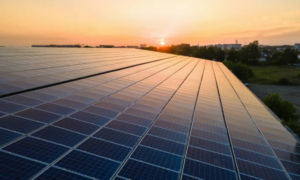Introduction
India has made a significant advancement in encouraging the use of solar energy when the globe is battling the consequences of climate change and working to switch to cleaner, more sustainable energy sources. The nation launched a solar subsidy programme in 2023 with the goal of enticing residential users to switch to solar energy. This programme helps lower the cost of installing solar panels while lowering carbon emissions and the planet’s total carbon footprint. Let’s explore the incentives, requirements, application procedure, and possible effects of India’s solar subsidy programme on the country’s energy sector.
The Central Financial Assistance (CFA)
In a calculated attempt to increase the use of solar energy in the residential sector, the Indian government unveiled the Rooftop Solar Programme Phase II at the end of 2022. This programme, run by the Ministry of New and Renewable Energy (MNRE), offers Central Financial Assistance (CFA) to people and organisations setting up rooftop solar systems. The direct benefit transfer (DBT), which ensures that customers get the incentive immediately in their bank accounts, is a noteworthy aspect of this scheme.
Eligibility for Central Financial Assistance
Residential customers with grid-connected solar plants are eligible for the CFA. Notably, resident welfare associations (RWAs) and group housing societies with a solar capacity of up to 500 kW qualify for the subsidy. To be eligible for this incentive, you must adhere to certain conditions established by the MNRE.
Calculation of the Solar Subsidy
With the exception of a few northeastern states and a few union territories, the CFA has made it easier to calculate subsidies, fostering consistency throughout the nation. The following are the subsidy amounts:
- Solar energy systems with a capacity of up to 3 kW are eligible for a subsidy of up to ₹14,588 per kW.
- For systems with a capacity between 3 kW and 10 kW, the subsidy is ₹14,588 per kW for the initial 3 kW and ₹7,294 per kW for the remaining capacity.
- Plant capacities exceeding 10 kW are entitled to a fixed subsidy of ₹94,822.
- RWAs and Group Housing Societies can receive ₹7,294 per kW for common facilities up to 500 kWp, with a cap of 10 kWp per house.
North Eastern and Hilly States Get a Special Subsidy
In a bid to promote solar adoption in northeastern and hilly regions grappling with distinct challenges, such as Sikkim, Uttarakhand, Himachal Pradesh, Jammu & Kashmir, Ladakh, Lakshadweep, and Andaman & Nicobar Islands, MNRE offers a slightly augmented CFA:
- Individual households with a solar capacity of up to 3 kW can receive ₹17,662 per kW.
- For rooftop solar capacity between 3 kW and 10 kW, the subsidy is ₹17,662 per kW for the initial 3 kW and ₹8,831 per kW for the remaining capacity.
- Plant capacities exceeding 10 kW are entitled to a fixed subsidy of ₹1,14,803.
- RWAs and Group Housing Societies in these regions can avail ₹8,831 per kW for common facilities up to 500 kWp, capped at 10 kWp per house.
Application Process
The Indian government has streamlined the application process for solar subsidies through the National Portal for Rooftop Solar. Here’s how to apply:
- Register and apply www.solarrooftop.gov.in. It’s important to note that no vendor or third party can apply on behalf of the beneficiary.
- Within 15 days, the DISCOM will conduct a technical feasibility study.
- Once approved, you can proceed with system installation through registered vendors.
- Apply for net metering after installation, and the request will be forwarded to the DISCOM.
- A plant inspection will be carried out, and a commissioning certificate will be issued upon meeting all guidelines.
- After providing your bank details on the portal, the subsidy funds will be credited to your account within 30 days.
Conclusion
India’s solar subsidy programme has made a significant step towards adopting sustainable energy in the residential sector. The government wants to enable people and communities to adopt renewable energy solutions by easing the financial burden of solar panel installation. The program’s features, such as online application procedures and direct benefit payments, are examples of the country’s dedication to modernising its energy infrastructure and addressing climate change. India is moving on with its solar subsidy programme to harvest solar energy and give its people hope for a greener, more sustainable future.
Also Read: Top Five States For High Solar Power Generation Across India





